2024 Yamaha GP HO Review

Engine: Four-cylinder 1,898cc
Fuel Capacity: 18.5 gal.
Stowage Capacity: 28.4 gal.
Weight: 710 lbs
Seating Capacity: 3
MSRP: $14,499
Something old, something new, something borrowed, something (kind of) Yamaha blue.
The original saying has more to do with weddings than watercraft, but it could be the mantra for Yamaha’s 2024 GP HO. The old is the longstanding GP name itself, a designation that has long been reserved for Yamaha’s most aggressive musclecraft. The new is undoubtedly Yamaha’s recently unveiled 1.9-liter engine. Borrowed could be a lot of things, but for now we’ll note that, in addition to the GP HO, that engine is shared by craft in both the VX and FX lines.
As to the blue? It’s not the familiar deep shade of Yamaha Racing Blue we’ve come to expect, but rather the gorgeous cyan that we saw just hints of in 2023. Yes, you can also get it in red but the cyan is a fresh touch.
The end result of all four is a craft that’s sporty, aggressive…and gets a little added performance boost without the cost of a supercharger.
Big Guns
That new engine is one obvious reason for the change in designation starting in 2024. At 1.9 liters (1898cc) the naturally aspirated, 16-valve four stroke is the largest we’ve ever seen in the personal watercraft market and produces an even 200 horsepower. In addition to the extra ccs, a 10-percent larger throttle body and both optimized intake and exhaust paths improve acceleration, as well as promise to provide a smoother feel to the response. The motor also ushers in a material that looks to be the start of something bigger down the road. For now it’s found on just an engine cover made in part from plant-derived, cellulose nano fiber (CNF) reinforced resin. Yamaha notes it’s 25-percent lighter than existing resin materials, recyclable, and reduces the use of plastics and greenhouse gas emissions (namely carbon dioxide).
In addition to the new engine, changes have also been made to both intake grate and jet pump. The goal is to deliver less turbulent water to the jet pump, resulting in better acceleration and reducing the amount of cavitation the boat can experience in choppy conditions.
The HO version also gets a feature previously reserved for its supercharged brethren, Auto Trim. As the name implies, Auto Trim works independently from the handlebar-mounted electric trim control and attempts to deliver improved overall performance in certain situations. When activated, Cornering Control automatically trims the bow down when decelerating to deliver tighter cornering and a more “race-like” feel. Launch Control likewise keeps the bow planted during hard acceleration.
As to the power that results, expect a top speed of about 63 mph and a little punchier feel during acceleration.
Greatest Hits
As we’ve noted numerous times before, the GP hull is legendary in race circles. It bites into corners with tenacity, making this one of the hardest turning craft on the market. Handlebars trade the normal cosmetic and cushioning enclosures for a racy, exposed look. Adjustable tilt dials in the fit for shorter and taller riders, as well as those who prefer to get low in the corners or stand during extended runs in choppy waters. A new seat design is sculpted to improve knee grip, crucial when trying to stay atop the boat when pushing the envelope. Footwells are wide and deep and offer a self-draining feature so as to not puddle with water, whether during riding or off-water storage.
As always, familiar features stand out. At the controls, a 4.3” Connext screen keeps tabs on vitals, and allows for activation of Drive Control, a low RPM mode and the craft’s security system. Cruise Assist makes for comfortable long-distance cruising or delivers a steady watersports pull, while No Wake Mode keeps a steady slow speed without throttle input for those lengthy slow-speed zones. Both are conveniently accessed on the handlebars.
The HO is also available with Yamaha’s popular factory-installed audio system. The package features two 4 1/2-inch waterproof marine speakers, integrated two-channel amplifier (50 watts per channel), a control pad within easy reach of the driver and a low-voltage regulator to make sure you save enough juice to get home after jamming out at the sandbar.
Turn And Burn
Competition at this lower end of the two-seat performance market likely comes from Sea-Doo’s GTR ($14,099). The Sea-Doo’s 1630cc ACE engine is smaller in displacement but boasts 230 supercharged horses. Top speed is a near identical 64 mph, but handling is not as precise as the Yamaha, but rather a tad more playful. Sea-Doo also offers an equivalent to RiDE for reverse and rapid deceleration, optional Bluetooth sound system, and cool pop-up cargo mounts for the brand’s extensive list of LinQ accessories.
Ultimately, both craft deliver much of the style and thrill of a more potent sibling but at a more affordable price point. Both are also reminders that while today’s three-passenger flagship are indeed exciting and versatile, for the performance enthusiast arguably nothing compares to a sporty, nimble model that can truly turn…and burn.
Get PersonalWatercraft.com in your Inbox!
Like PersonalWatercraft.com on Facebook
Comments
Most Popular

2025 Yamaha JetBlaster PRO 2-Up Review

Remembering the Sea-Doo XP

2024 Kawasaki Jet Ski STX 160X Review

2017 Kawasaki Jet Ski Ultra 310LX Review

Whatever Happened to the Wetbike?

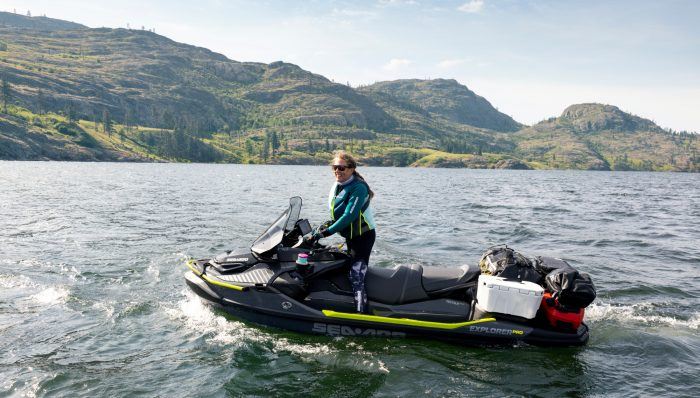
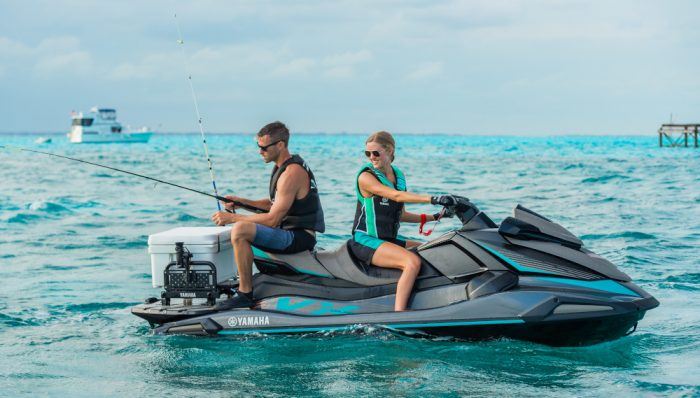
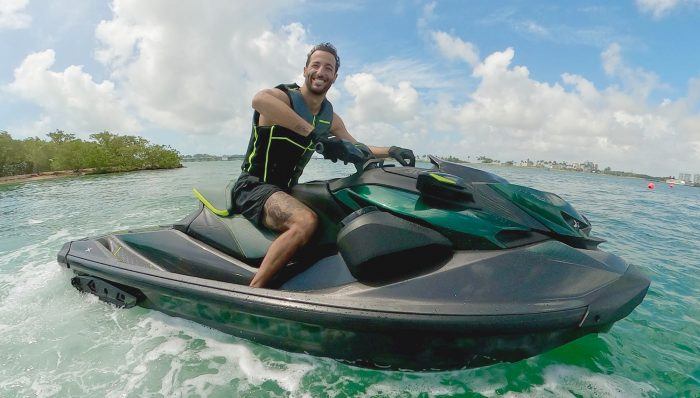








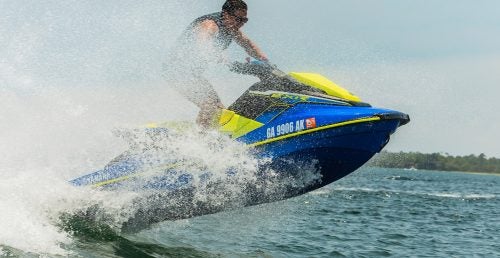


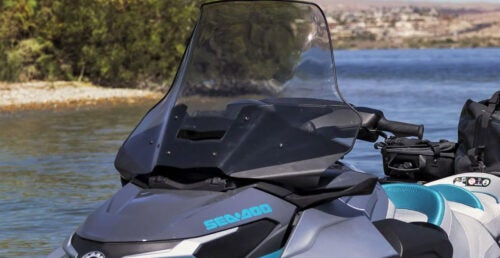
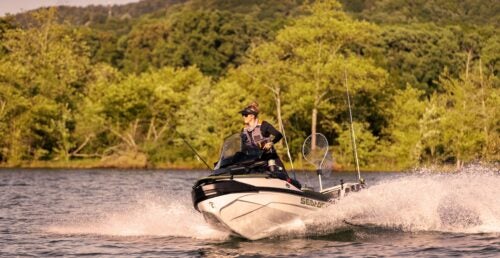


 Your Privacy Choices
Your Privacy Choices